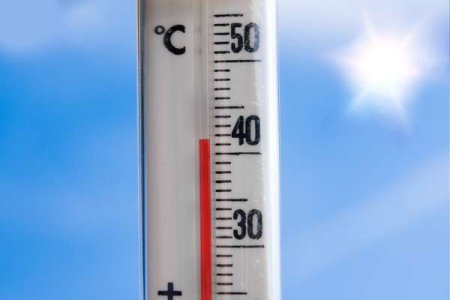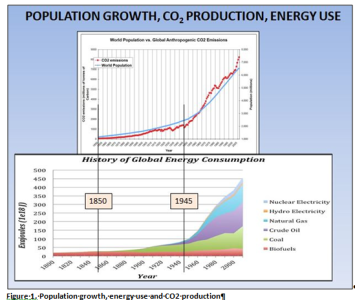Shadows over sunny Australia: Study predicts unliveable conditions due to extreme heat
- Replies 26
Australia is renowned for its sun-drenched beaches and warm climate, which are a major draw for both locals and tourists.
However, a recent study has cast a shadow over this sunny image, predicting a grim future where parts of the country could become ‘unliveable’ due to extreme heat.
The study suggests that residents in these areas could face fatal consequences if they spend more than six hours outside their homes.
The map, which has been described as ‘grim’, highlights Northern Australia as a region that will bear the brunt of these harsh conditions.
Climate scientists warned that the combination of intense heat and humidity will reach levels that are not just uncomfortable but downright deadly.

Bill Hare, a climate scientist and Chief Executive of Climate Analytics, pointed out that areas such as Broome and Katherine are on the frontline of this climate crisis.
Even a seemingly small increase in temperature, just 1.5C, could render these places inhospitable during certain times of the year.
‘You would not be able to enjoy Cable Beach for large parts of the year,’ he stated.
‘We are already seeing small periods of lethal heat in South Asia, West Asia and South East Asia where there have already been reports of mortality occurring.’
‘It is already getting toward the limit of human liveability,’ Mr Hare added.
The situation is reminiscent of the 2003 European heatwave, which was the hottest summer recorded since 1540.
That event led to widespread drought, food shortages, and the deaths of more than 70,000 people.
In Australia, the Kimberley region already experienced bursts of lethal heat, which have devastated livestock and wildlife.
Meanwhile, cities like Perth—which is currently experiencing its longest period of dry heat and no rain—were not expected to encounter a lethal mix of humidity and heat within the next 25 years, the situation is more urgent in the north.
‘It will happen slowly and gradually, the weather will become really extreme and it will get worse and worse,’ Mr Hare warned.
‘There is only one way to limit this damage, but you won't eliminate it, people will need to adapt to it.’
According to Mr Hare, the path forward involves both mitigation and adaptation.
To mitigate the damage, he suggested that carbon emissions need to be cut by 50 per cent in the next decade, with Australia aiming for net zero by 2050.
‘In the last 10 years, the largest increase in carbon dioxide and global warming came from fossil fuel emissions,’ Mr Hare pointed out.
‘Coal is being phased out, and the same thing needs to apply to gas, it should already be reducing…The federal government needs to step off supporting gas and go full throttle on supporting renewables.’
‘They talk about Australia being a green energy super power, but it also doesn't address the changing market for energy,’ he added.
According to a representative of Climate Change and Energy Minister Chris Bowen, the government has implemented policies over the past 22 months to achieve Australia's 2030 emissions reduction target of 43 per cent.
Additionally, this year's federal budget earmarked $22.7 billion to foster industries like green hydrogen, critical minerals, and solar manufacturing, supporting decarbonisation efforts both domestically and globally.
As concerns over the livability of Northern Australia intensify amidst rising temperatures and extreme weather events, residents find themselves grappling with the harsh realities of climate change on a local level.
Reports highlighting the challenges faced by communities in areas like Broome and Katherine underscore the urgent need for adaptive strategies to mitigate the impacts of soaring temperatures.
In the face of such adversity, drawing upon the invaluable local knowledge and resilience of residents becomes paramount, as highlighted in discussions on navigating the effects of climate change within homes already enduring scorching temperatures.
 Have you noticed changes in the climate where you live? What steps do you think should be taken to combat these challenges? Share your thoughts and opinions in the comments below!
Have you noticed changes in the climate where you live? What steps do you think should be taken to combat these challenges? Share your thoughts and opinions in the comments below!
However, a recent study has cast a shadow over this sunny image, predicting a grim future where parts of the country could become ‘unliveable’ due to extreme heat.
The study suggests that residents in these areas could face fatal consequences if they spend more than six hours outside their homes.
The map, which has been described as ‘grim’, highlights Northern Australia as a region that will bear the brunt of these harsh conditions.
Climate scientists warned that the combination of intense heat and humidity will reach levels that are not just uncomfortable but downright deadly.

Climate scientist Bill Hare forecasted that Northern Australia could become ‘unlivable’ due to extreme heat and humidity in the coming decades. Credits: Shutterstock
Bill Hare, a climate scientist and Chief Executive of Climate Analytics, pointed out that areas such as Broome and Katherine are on the frontline of this climate crisis.
Even a seemingly small increase in temperature, just 1.5C, could render these places inhospitable during certain times of the year.
‘You would not be able to enjoy Cable Beach for large parts of the year,’ he stated.
‘We are already seeing small periods of lethal heat in South Asia, West Asia and South East Asia where there have already been reports of mortality occurring.’
‘It is already getting toward the limit of human liveability,’ Mr Hare added.
The situation is reminiscent of the 2003 European heatwave, which was the hottest summer recorded since 1540.
That event led to widespread drought, food shortages, and the deaths of more than 70,000 people.
In Australia, the Kimberley region already experienced bursts of lethal heat, which have devastated livestock and wildlife.
Meanwhile, cities like Perth—which is currently experiencing its longest period of dry heat and no rain—were not expected to encounter a lethal mix of humidity and heat within the next 25 years, the situation is more urgent in the north.
‘It will happen slowly and gradually, the weather will become really extreme and it will get worse and worse,’ Mr Hare warned.
‘There is only one way to limit this damage, but you won't eliminate it, people will need to adapt to it.’
According to Mr Hare, the path forward involves both mitigation and adaptation.
To mitigate the damage, he suggested that carbon emissions need to be cut by 50 per cent in the next decade, with Australia aiming for net zero by 2050.
‘In the last 10 years, the largest increase in carbon dioxide and global warming came from fossil fuel emissions,’ Mr Hare pointed out.
‘Coal is being phased out, and the same thing needs to apply to gas, it should already be reducing…The federal government needs to step off supporting gas and go full throttle on supporting renewables.’
‘They talk about Australia being a green energy super power, but it also doesn't address the changing market for energy,’ he added.
According to a representative of Climate Change and Energy Minister Chris Bowen, the government has implemented policies over the past 22 months to achieve Australia's 2030 emissions reduction target of 43 per cent.
Additionally, this year's federal budget earmarked $22.7 billion to foster industries like green hydrogen, critical minerals, and solar manufacturing, supporting decarbonisation efforts both domestically and globally.
As concerns over the livability of Northern Australia intensify amidst rising temperatures and extreme weather events, residents find themselves grappling with the harsh realities of climate change on a local level.
Reports highlighting the challenges faced by communities in areas like Broome and Katherine underscore the urgent need for adaptive strategies to mitigate the impacts of soaring temperatures.
In the face of such adversity, drawing upon the invaluable local knowledge and resilience of residents becomes paramount, as highlighted in discussions on navigating the effects of climate change within homes already enduring scorching temperatures.
Key Takeaways
- Climate scientist Bill Hare predicted that Northern Australia could become ‘unliveable’ in future decades due to intense heat and humidity.
- Humans might only survive outdoors for six hours at a time without fatal consequences.
- Lethal heat is expected to emerge with just a 1.5C increase in temperature.
- Mr Hare emphasised the need for significant reductions in carbon emissions and a shift towards renewable energy to mitigate the impacts.








